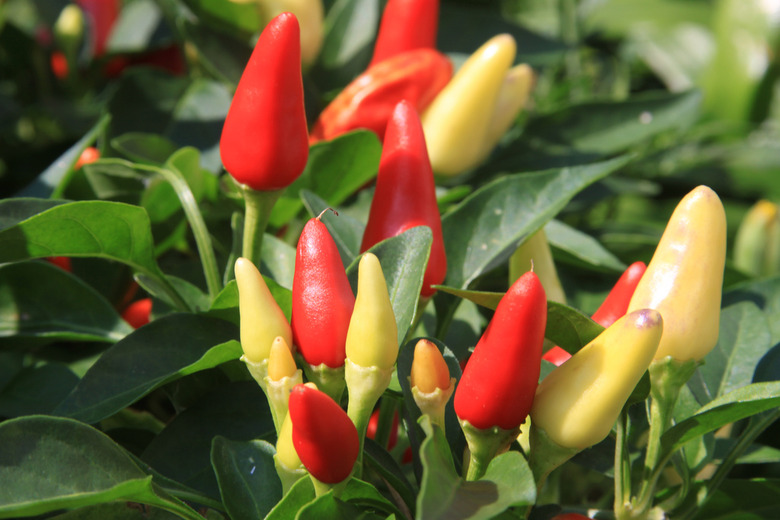How To Take Care Of An Ornamental Pepper Plant
Things Needed
- Ornamental pepper plant
- Watering can
- Low-nitrogen fertilizer
Tip
Ornamental pepper plants do not have many pest problems, however you can use insecticidal soap to deal with any aphids, thrips, or whiteflies without harming your plant. Ornamental peppers can also be grown outdoors during the summer or year-round in warmer climates.
Warning
According to the ASPCA, ornamental pepper plants are toxic to cats, dogs and horses. This is in addition to the irritation that may be caused by the spiciness of the peppers themselves.
Ornamental pepper plants are dwarf pepper plants with more colorful fruits and foliage than the standard hot pepper varieties. They are ideal as houseplants because of their small size and easy growth habits. Although you could grow these plants indoors at any time of year, they are particularly popular as a way to bring some color inside during the winter. This is reflected in the names of ornamental pepper varieties such as "Holiday Lights" and "Poinsettia Pepper." However, there are also varieties such as "Black Pearl" and "White Fire" available. Check nurseries and seed catalogs to find the latest selections.
Step 1
Fertilize when planting. You can also fertilize lightly with a low-nitrogen fertilizer (marked with 5-10-10 or similar ratio) once a month, but this is not necessary after the pepper fruits start to form.
- Ornamental pepper plants are dwarf pepper plants with more colorful fruits and foliage than the standard hot pepper varieties.
- Although you could grow these plants indoors at any time of year, they are particularly popular as a way to bring some color inside during the winter.
Step 2
Keep inside once temperatures fall below 55 degrees F. Ornamental pepper plants will remain small enough to make good indoor plants.
Step 3
Place in a sunny window or provide supplemental lighting. This will help the plant to produce more blooms and thus more peppers.
Step 4
Choose a location that is high enough to be out of the reach of pets and small children. Ornamental peppers are very spicy and their oils can cause eye irritation.
Step 5
Water your ornamental pepper plant daily, but make sure that the soil is not oversaturated. Make sure that your pepper pot has good drainage.
- Keep inside once temperatures fall below 55 degrees F. Ornamental pepper plants will remain small enough to make good indoor plants.
Step 6
Pinch new growth to keep your plant compact and encourage new growth. Ornamental pepper plants are naturally small, but this will help to keep them at their best.
Step 7
Pick fruits for decoration or allow to dry on the plant. Do not eat as ornamental pepper plants may have been treated with pesticides or fungicides not intended for human consumption.
